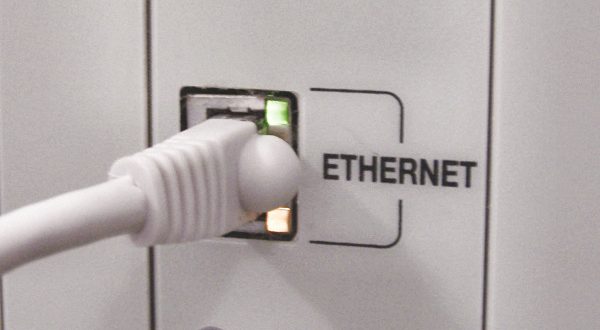Ethernet

Ethernet is the most widely installed local area network (LAN) technology. Ethernet is a link layer protocol in the TCP/IP stack, describing how networked devices can format data for transmission to other network devices on the same network segment, and how to put that data out on the network connection. It touches both Layer 1 (the physical layer) and Layer 2 (the data link layer) on the OSI network protocol model. Ethernet defines two units of transmission, packet and frame. The frame includes not just the “payload” of data being transmitted but also addressing information identifying the physical “Media Access Control” (MAC) addresses of both sender and receiver, VLAN tagging and quality of service information, and error-correction information to detect problems in transmission. Each frame is wrapped in a packet, which affixes several bytes of information used in establishing the connection and marking where the frame starts.
Specified in the family of standards known as IEEE 802.3, Ethernet was originally developed by Xerox in the 1970s. Ethernet was initially designed to run over coaxial cables, but a typical Ethernet LAN now uses special grades of twisted pair cables, or fiber optical cabling. Wi-Fi standards (IEEE 802.11a, b, g, n and now ac) define the equivalent of Ethernet for Wireless LANs.) Ethernet standards are steadily evolving to embrace new media, higher transmission speeds and changes in frame content (e.g., 802.3ac to accommodate VLAN and priority tagging) and functional requirements (e.g., 802.3af, defining Power Over Ethernet [POE] crucial to most Wi-Fi and IP telephony deployments).
Ethernet initially assumed a shared medium: multiple devices on each segment of the network, connected daisy chain at first but later in star topology via Ethernet hubs (which replicated all traffic received on any port to every other port). It therefore defines a means of sharing the medium: Carrier Sense Multiple Access with Collision Detection (CSMA/CD). Ethernet devices will check to see if anyone else is transmitting at the moment (carrier sense of multiple access) and if so (collision detection) will wait a short time before retrying the transmission. Over time, though, hubs were replaced by switches, which send to each port only the traffic directed to the device on that port. That, combined with the migration from coaxial to twisted pair cabling (with dedicated pairs for sending and receiving data) and optical fiber, made shared-medium problems a thing of the past.
The most commonly installed Ethernet systems are called 100 BASE-T (the “BASE-T” part means the systems use twisted-pair cabling) and provide transmission speeds up to 100 megabits per second (Mbps). Gigabit Ethernet provides speeds of 1000 Mbps (1 gigabit or 1 billion bits per second) and 10 GbE, or 10-Gigabit Ethernet, provides up to 10 Gbps, and so on. Higher speeds are constantly under development for standardization. Network engineers use 100 BASE-T mostly for the connection of end-user computers, printers and the like; 1000 BASE-T for servers and storage; and higher speeds for network-backbone segments. Over time, the speed typical in each kind of connection tends upwards.